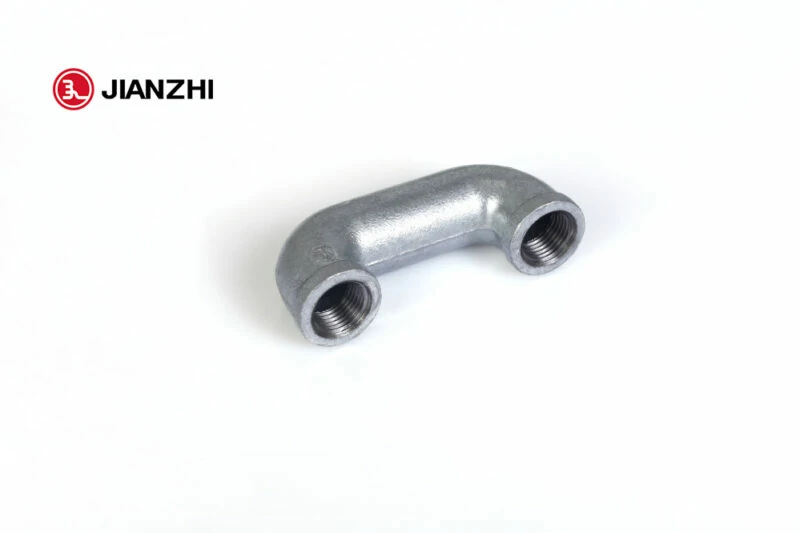The choice of materials in plumbing systems, especially in extreme climates, is very important. The use of galvanized pipe fittings has been an effective solution for both the domestic and industrial sectors. Here, we’ll delve into the different types of galvanizing coatings with a primary focus on their corrosion protection features and options that provide the best performance.
Understanding Galvanized Pipe Fittings
First of all, galvanized pipe fittings are made of high-quality molten iron that is heated and then annealed into malleable iron. To protect them from rust, corrosion, and mineral buildup, these fittings are dipped in a zinc coating.

Key Benefits of Galvanized Fittings
One of the greatest advantages of galvanized fittings is that it possesses high corrosion resistance. The presence of the zinc layer on the galvanized fittings does not allow for the formation of rust. Such a feature is of great importance, especially in the settings of excess moisture or high humidity, where the exposed metals not treated would within a short period of time, become non-functional.
It should be underlined that the zinc layer applied to fittings significantly prolongs their service life. In harsh environments, such as industrial settings or outdoor applications, galvanized fittings outperform standard fittings due to their enhanced resilience.
Aesthetic Appeal: Galvanized fittings have a special shiny surface that is not only good looking but also shows their protecting layer.
Types of Galvanized Fittings Available
Jianzhi Group has the most detailed catalog of GI fittings, which have many various shapes and types to satisfy the needs of different China pipe fittings. Some familiar ones may be the following:
Elbows: Used to change the direction of pipes, they come in 45-degree as well as 90-degree angles.
Tees: Joined with three pipes in the 90-degree condition, a tee will support the system in plumbing and make branches.
Bushings: Used as conversion components to link different sized pipes together.
Unions: These accessories are specifically for quick breakdown which means that they join two galvanized pipes firmly.
Crosses: Useful in the transition of four pipes through the main and lateral lines the cross is a typical application that requires right angles for a suitable layout of the distribution system.
The Importance of Quality Galvanizing Coatings
The efficiency of galvanized fittings is actually very much dependent on the quality of the galvanizing process. The different types of galvanizing coatings are shown below:
1. Hot-Dip Galvanizing
When a fitting is hot-dip galvanized, it gets submerged in molten zinc. The method yields a rather thick, long-lasting covering that builds in outstanding anti-corrosion features. The resulting benefits are these:
More Coating: The zinc layer’s thickness not only increases the durability but also makes it resistant to the oxidation process, thus being suitable for outdoor applications.
Strong Adhesion: The zinc bonds well with the metal surface, which lowers the chance for peeling or flaking.
Self-Healing Properties: If there is a scratch on the coating, the zinc can ceaselessly corrode without damaging the underlying metal, thus giving continuous protection.
2. Electro-Galvanizing
Electro-galvanizing is a way to apply a layer of zinc through an electrochemical reaction which is thinner than hot-dipping. While this method is relatively less expensive, it might not be suitable for environments where more excellent protection against corrosion is needed due to thin layers. It works perfectly in dry or indoor applications.
Protecting Galvanized Pipe Fittings in Extreme Climates
In harsh weather, the anti-rust nature of galvanized fittings is even more indispensable. Here are some ways to reinforce the performance of these fittings:
Regular Inspections: Frequent visual checks of fittings to ensure no tab or chip are visible. Prompt identification makes the establishment of larger problems less likely.
Proper Installation: Thoroughly check that galvanized iron fittings are fixed properly to prevent the occurrence of any shattering and rupture points. The correct use of the joint type can make the system integrity stronger.
Use of Dielectric Unions: If connecting to old pipes of other metals than zinc, copper, or brass, apply dielectric unions to hinder electrochemical corrosion.
Conclusion
It is crucial when you pick the suitable galvanized fittings as it ensures that corrosion protection and long life are definite even when very severe climate happen. Jianzhi GI pipe fittings are the most appropriate means for corrosion protection, and their extreme corrosion resistance, long durability, and adaptability match every application fully.
If further information or a catalog is needed for the galvanized fittings that we offer, you still can always contact us, being that Jianzhi Group is accessible at any time.
